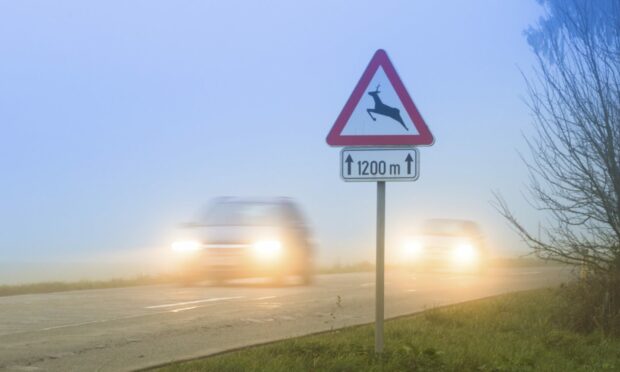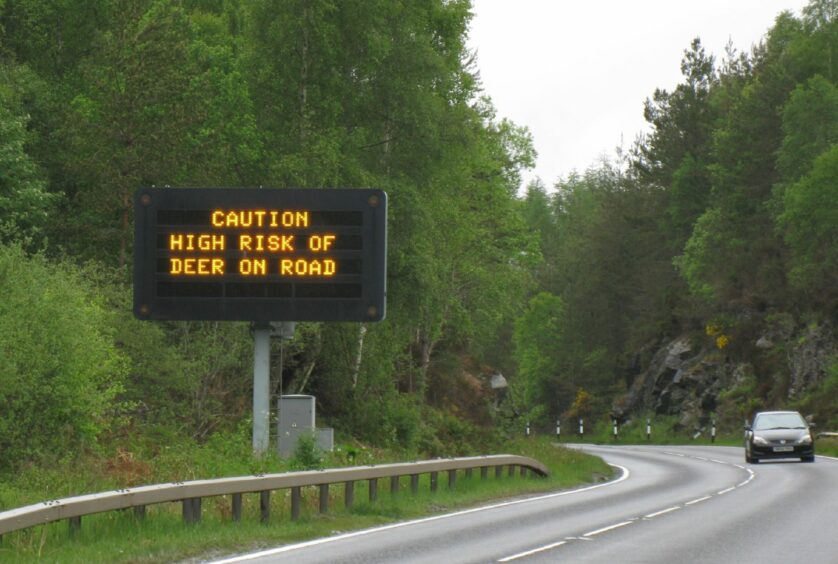Travel restrictions during Covid had no impact on the numbers of deer vehicle collisions (DVC) on the country’s roads.
In a report NatureScot, which monitors collisions between traffic and deer, said this was likely to be because freight was allowed to continue as normal.
Figures show that between 2008 and 2021, 700 people were injured or killed in incidents across the UK.
Roe deer continue to be the species most likely to be involved in a collision.
In a report, the agency said there were about 1,850 incidents a year across Scotland.
How many deer vehicle collisions were there?
The highest number of collisions occur in the Highlands, where between 2008 and 2021 there were 555 incidents.
Argyll and Bute had 369 incidents.
Aberdeenshire recorded 82 incidents, with a further three in Aberdeen city.
Moray recorded 88 cases.
The report said that there were no overall reductions in the numbers of incidents during the national lockdown.
The report said: “For three months in 2020, the UK entered a period of lockdown where travelling was severely restricted.
“Fewer car journeys suggested that there would be a reduction in animal roadkill. We looked at whether the number of DVCs reduced during lockdown.
“Fewer DVCs were reported by volunteers, as expected, but there was no overall reduction in DVCs during lockdown. The number of DVCs during lockdown was consistent with the previous five years.”
Explaining why, NatureScot said freight traffic continued during restrictions, suggesting that freight traffic is responsible for many DVCs.
It continued: “This makes sense, since domestic traffic is generally smaller and has shorter stopping distances, making it more likely that they could avoid deer on the road.”
Deer vehicle collisions during Covid did not decrease
NatureScot said its most up-to-date figures showed a decrease in collisions in the Highlands, due to migration of deer.
Collisions are reported by public and organisations such as Police Scotland and Scottish SPCA.
The report said: “Deer are large animals that are a potential hazard to vehicles on the road.
“Each year in the UK alone, it is thought that over 700 people are injured or killed, and over £17 million is spent on vehicle repairs because of Deer Vehicle Collisions (DVCs).
“In Scotland, increasing deer populations and growth in traffic have led to an increased risk of DVCs.”
The highest number of incidents are in May and June when young deer are looking for their own territories. The peak time for an incident is dusk, and spread over more hours in winter.
High risk areas could be identified as road junctions with wooded islands in urban locations.
What can be done to reduce collisions?
NatureScot said there were a number of things that could be done to reduce the number of collisions.
- Variable Message Signs can be used to warn drivers of the general risk of DVCs.
- Deer warning signs can be installed at high-risk locations and mobile signs can be used where there are no static signs.
- Reducing deer use of woodland adjacent to high-risk road junctions may reduce DVCs.
- Increased deer culling, though this is only practical in some situations.


